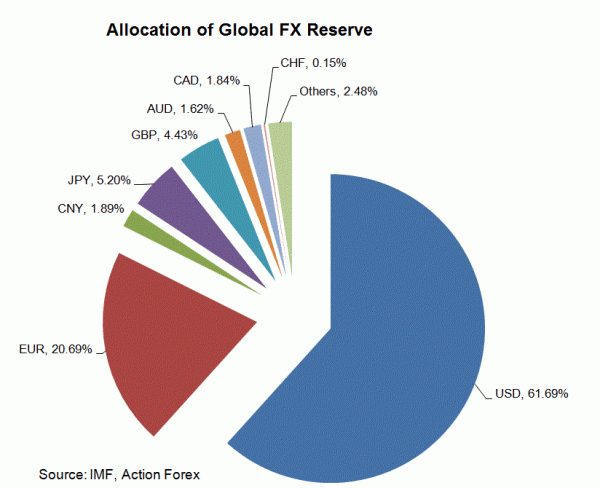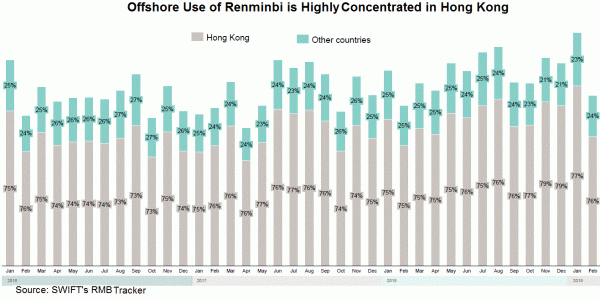Renminbi internationalization
The IMF’s latest report reveals that the process of renminbi internationalization remains sluggish as renminbi (Chinese Yuan) is still a tiny portion of global central banks’s FX reserve. In 4Q18, 1.89% global FX reserve was allocated to renminbi , compared with 1.07% in 4Q16, when the currency was first admitted to the Special Drawing Right (SDR) basket.
US dollar remains the world’s dominant reserve currency, although its holdings continue to drop. Global allocation to USD reserve fell to 61.69% in 4Q18, compared with 62.72% in 4Q17 and 65.36% in 4Q16. There are a number of reasons for the erosion of confidence in the greenback. Notwithstanding the fact that the establishment of the euro has led to the shift in demand from USD to the single currency, the persistent twin deficit facing the US government and Fed’s aggressive QE in 2008-2014 to devalue the currency have raised concern over the stability of the greenback.
Nevertheless, it remains farfetched to suggest that the rise of renminbi is threatening US dollar’s status of reserve currency. Not only is allocation of renminbi in global FX reserve small, the currency’s share as an international payments currency is also limited. The chart below shows that renminbi took up 1.15% in international payment, compared with 43.4% in US dollar. Note also that, amongst the offshore customers (excl. China) choosing renminbi as a medium of payment, those in Hong Kong take up over 75%. This proves that the process of renminbi internationalization remains limited.
China is the world’s second largest economy, and the world’s largest exporter and second largest importer, the disproportionately small exposure of renminbi the global arena has been driven by the poor governance of the Chinese authority. The lack of transparency in the renminbi fixing scheme, capital control measures and limited participation of foreign investors in the country’s bond markets are prohibiting the renminbi to become a world currency.















